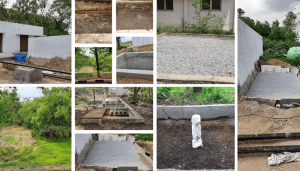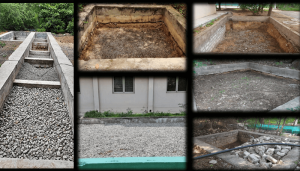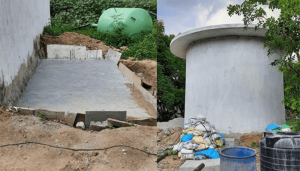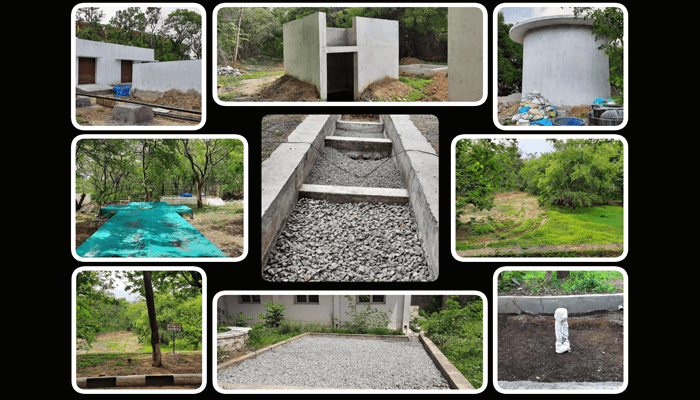The International Institute of Information Technology Hyderabad (IIITH) is a tanker-free campus. Located in the (now) densely populated and water-stressed area of Gachibowli, it is being held up as an inspirational story for other communities to emulate. Here’s a brief round-up of all the green efforts on campus with regard to water sustainability.
Thanks to climate change, Summer is typically not the most looked forward-to season of the year. With the global pandemic creating a media eclipse overshadowing all other news, coupled with the onset of the monsoon, it may seem (albeit erroneously) that all the miseries associated with Summer – heat waves, acute water scarcity and drought – are a thing of the past. That is however far from the truth. It is a known fact that with groundwater levels dipping alarmingly, water scarcity rears its ugly head even before the onset of Summer. Over the last couple of years, many major Indian cities have experienced acute water shortages. In 2019, the city of Chennai hit the headlines after all 4 of its reservoirs ran dry. In Telangana too, Hyderabad is witnessing a rapid decline in ground water as extraction rate is high. According to the Telangana Groundwater Department, Hyderabad is drawing an average of 340% of the annual recharge volume. If a 2018 Niti Ayog report is to be believed, at least 21 Indian cities, including Hyderabad, will run out of groundwater this year (2020).

Sustainability Is Not Just A Slogan
Kalpana Ramesh, a city-based, prominent water conservation champion and CEO of The Rainwater Project (TRP), terms the Niti Ayog report as a “wake-up call”. With a majority of the communities highly reliant on water tankers or municipal water supply, her focus is on long-term water sustainability for Hyderabad. “Municipal water comes from 200 kms away. In addition to prohibitive costs associated with lift irrigation, we have to consider the fact that already our rivers are facing 50% dry-out. A future planned around these fresh water sources that come from several hundred kms away is simply not sustainable. We need to look at alternate resources which is ground water. And how? By rain water which literally comes to your doorstep and is free of cost,” she says. As part of the Blue Hyderabad campaign that was kicked off in collaboration with Greater Hyderabad Municipal Corporation (GHMC), Hyderabad Metropolitan Water Supply and Sewerage Board (HMWSSB), and the Society for Advancement of Human Endeavour (SAHE), Kalpana’s efforts are on recharging of ground water in the 98 micro watershed divisions of Hyderabad.

Water Conservation In IIITH
While the institute’s green success story is being talked about today, initial efforts in the direction of water conservation began about 5 years ago. “Summer was particularly harsh then. In fact, there were reports of the University of Hyderabad vacating hostels due to a severe water crisis on its campus,” says Dr. Prabhakar Bhimalapuram. Even though IIITH itself was not severely impacted, the effects of the water table in the Gachibowli area precipitously dipping were felt in the diminishing borewell yields on campus too. “We’ve never had to rely on water tankers..at least in the last 13 years that I’ve been here,” says Srinivas K., Executive Engineer, with some pride. “Even in the peak months of usage, during academic sessions, we successfully managed with a combination of using water judiciously, and fixing leaks wherever found,” he says. In order to further such efforts, that Summer the institute constituted a committee to explore ways of harvesting rain water. The primary goal proposed was to ensure that zero rain water on campus made its way to sewage drains. What it meant was that all rain water was to be allowed to percolate into the ground. While the ideal goal would have been to eventually use the harvested rain water, there were several issues associated with that proposal.
“To actually utilise collected rain water means retrofitting many of the buildings which is rather challenging,” explains Dr. Bhimalapuram. Hence it was decided to instead utilise the massive open spaces available on campus to the institute’s advantage by building pits where rainwater could seep into the ground. With this, a two-fold advantage was sought. One, the requirement of new and expensive infrastructure was limited. And second, with minimal surface run-off, there would be significantly lesser flooding of the roads outside the campus which is frequently reported thanks to the elevation of the institute.

Saving Surface Run-Off
Rainwater from rooftops of buildings too was not allowed to flow away into the drains. Dr. Syamasundara Reddy who was then faculty involved in research on sustainable farming systems ensured that rooftop run-off went into appropriate channels around every building. The Engineering wing then looked into connecting these channels with the sinking pits. The roof water or excess terrace run-off is now diverted into tank beds or ponds that have been constructed behind the Himalaya block and opposite Vindhya and Nilgiri blocks. In cases where the buildings are located at a considerable distance from the ponds, groundwater is recharged with the help of drums. What this means is that PVC pipes from rooftops are channelled into a perforated drum placed in a 4x4x4 pit. Rain water that falls on roughly 300-400 sq ft of roof top area gets collected in the drum, slowly seeping through the gravel bed and eventually goes into the ground. Trees planted in this green zone are thriving thanks to the drum recharge.
As a pilot project, recharging of borewells was also undertaken with the entire roof-top run-off from the Nilgiri block diverted towards a borewell opposite the building. Along with this, another recharge pit was constructed near the borewell behind the guesthouse. According to Srinivas, recharging of all the 10 borewells that exist on campus has not been undertaken because most of them are located at a distance from buildings. However, he says,“Wherever possible we have diverted terrace water for borewell recharging.”

Sewage Treatment
From the Nilgiri block right till the main gate, all gardening and landscaping is done with the help of recycled water. A grey water treatment plant has been constructed which uses relatively clean sink, and bath water from the Bakul hostel. Similarly, there’s another sewage treatment plant (STP) opposite Vindhya which has both black and grey water mixed in it. “ This water needs a little more treatment, hence we are currently using it only for gardening purposes,” explains Srinivas. An STP located near the faculty quarters filters grey water that is used exclusively for the agricultural farm on the campus. More recently, a state-of-the-art STP that can treat around 400 kilolitres of both grey and black water has been constructed and is likely to be operational by the end of the month. “We hope to use this treated water for toilet flushing in Palash, Kadam, Parijat and its extension blocks,” says Srinivas.
Inspiring Others
Speaking of the alarming water situation in the neighbourhood of Gachibowli, Dr. Bhimalapuram says, ”Where once 300ft was supposed to be sufficient to hit water, borewells are now being drilled upto 1500 ft. And again the same borewells are often of no use approximately 6 months of the year. With our water conservation efforts, if we are able to encourage the other companies and offices in our proximity to do whatever they can (at the same level), the water table will increase in the area.” For Kalpana Ramesh, the Blue Hyderabad project is all about collective action and inspirational water stories such as those from IIITH. “If such a large institute with 1000s of students can manage without tankers, it is because they have put it those kind of efforts,” she says. While exhorting other campuses and communities to do the same, she emphasises that having a water bank of your own can ensure sustainability in a decentralized fashion. Unlike other large office spaces that dot the same road on which the institute lies, IIITH is replete with permeable surfaces allowing rain water to percolate through. “Open, non-concrete spaces with adequate greenery is essential for rain water harvesting. Trees with root systems rejuvenate the soil and help in recharging. IIITH has a well spread out campus with large trees. Even parts of the buildings with inner courtyards are open. Such a campus is a very good example in an urban scenario today,” says Kalpana.



Next post